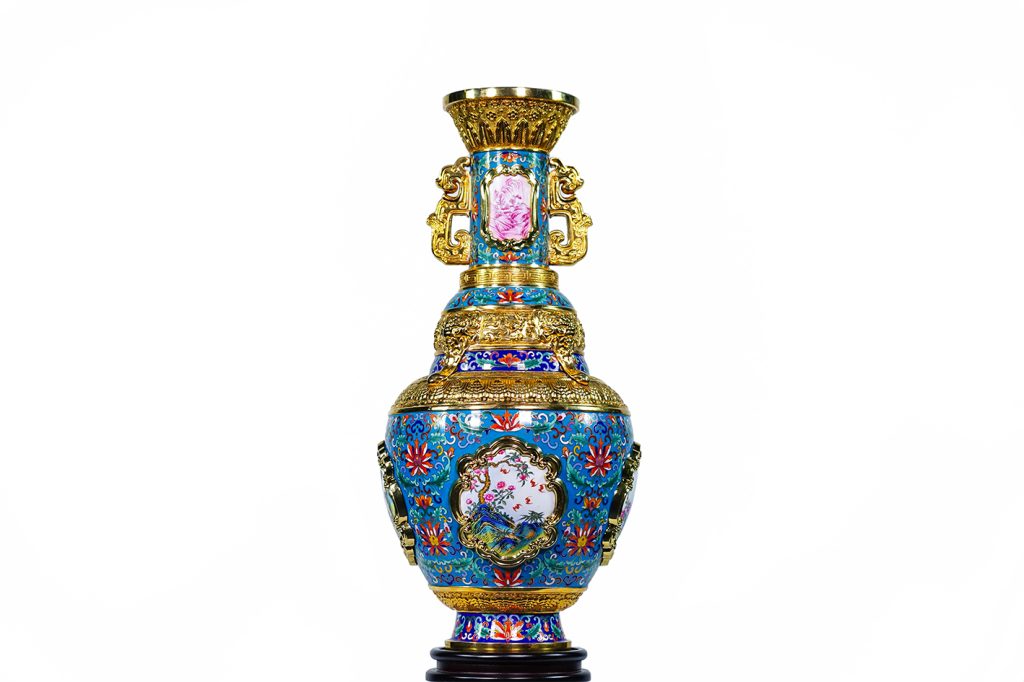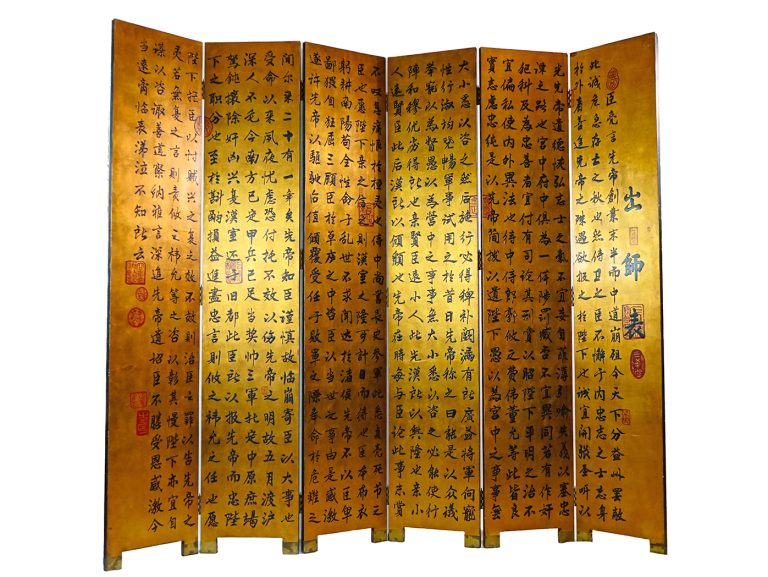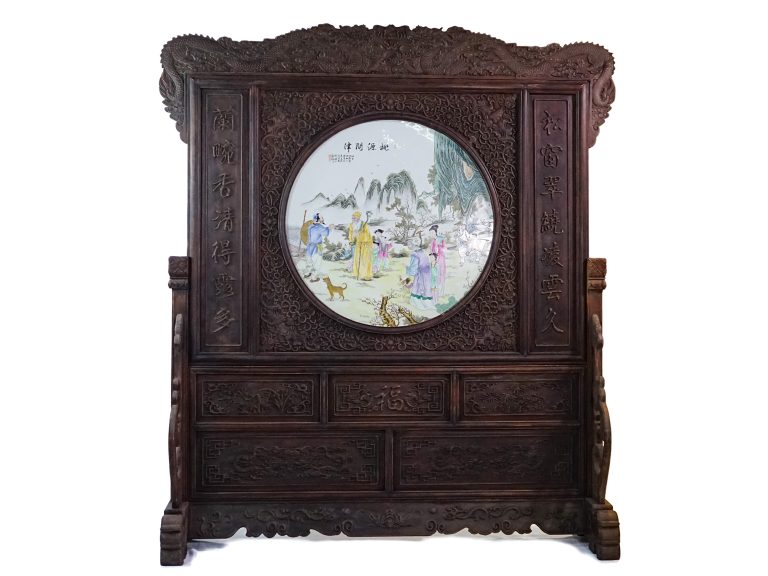

The “Five Fortune Vase” is a key star in the “Jingtai Baibao” project of the Forbidden City. It is cast with two top stunts in the Qing Dynasty, showing the world-class charm of cloisonné inlaid enamel porcelain. The auspiciousness of happiness, which perfectly integrates the cultural relics care and the pursuit of cultural spirit, builds a high-profile communication bridge between the historical museum and real life, and shoulders the great significance of trans-epoch.
Coinciding with the 600th anniversary of the construction of the Forbidden City, the Chinese government resolutely established the “Jingtai Hundred Treasures of the Forbidden City” project, determined to bring cultural relics out of the Forbidden City and into the people’s life, so as to promote the treasures of civilization that have accumulated over a century. As a result, a number of national institutions: the Palace Museum, the National Museum, the Chinese Society of Cultural Relics, etc., joined hundreds of experts: Jin Yutian, Liu Yongsen, Mi Zhenxiong, Huo Tiehui, and others fully cooperated to participate, with the mission of disseminating and preserving intangible cultural heritage skills. In the process of recreating the nearly 10,000 pieces of cloisonne in the Forbidden City, 60 of the most representative works, the production materials, craftsmanship, procedures, etc. were examined strictly in accordance with the standards of the Qing Palace “Construction Office”. After four years, finally, with “Five Fortune Bottles” as the head, the brilliance of the cloisonne blue light of various eras in the long history has been recreated, giving it a new life force and continuing to pass on to the distant future.
The Forbidden City’s “Wufu Vase” is based on the “Qianlong Cloisonne Enamel Western Mother and Child Figure Vase” as the prototype. It is mainly composed of copper body cloisonné enamel, combined with mosaic and chisel engraving techniques, specially customized six-sided consecration, and integrated into the porcelain body painting enamel art. The works are more distinctive and unique than the various cloisonne colors. The Five Fortune Bottles have five parts: mouth, neck, shoulders, abdomen, and feet. The mouth of the bottle is as silky as silk, and the bottom of the mouth is engraved with small flowers and banana leaves in a circle, praying for the unity of all people and the great cause of mutual help. The bottleneck is creatively presented in a multi-stage style. The upper half is a tube-shaped blue ground with tangled branches and flowers, the left and right chiseled dragon ears, and the front and rear are inlaid with carmine red enamel colored landscape porcelain pieces, implying the flying dragon in the sky and the splendid mountains and rivers. The second half is divided into four layers, in which the fringe pattern, the blue-ground twisted branch and flower brocade, the animal face pattern, and the blue-ground twisted branch and flower brocade are engraved in turn. The animal face pattern is engraved with four three-dimensional heads, and the heads are engraved again. The head of the phoenix vividly expresses the prosperous situation of Taiping, the image of the phoenix and the phoenix.
The shoulders of the “Five Fortune Vase” are engraved with a circle of gilt carvings, engraved with lotus petals, fringe patterns, and cloud patterns. From this, it is hoped that God will bless the earth and that Chinese civilization will have a long history and endless growth. The abdomen of “Five Fortune Vase” converges downward, and the whole body is decorated with blue ground and tangled branches and flowers, showing the traditional cloisonne style. Among them, all sides are brightened, and enamel-colored porcelain ornaments are inlaid with gold edges, respectively depicting red bats celebrating their birthday, sika deer, and ribbons. Auspicious patterns such as birds and magpies convey the best wishes of good fortune, longevity, and happiness, and also add beauty to the elegant body and enhance the aristocratic temperament. Finally, a circle of lotus petals is engraved on the lower part of the abdomen, which is connected to the outer circle feet of the blue-ground tangled branch and flower brocade, which firmly supports the extravagant pomp of the entire bottle.
The Jingtai Baibao of the Forbidden City is the leading work of the cultural relic reconstruction project. It is peerless and extraordinary, and it also needs to face different degrees of difficulties in each craft level. First of all, in terms of design, each treasure in the Forbidden City is a top masterpiece handled by senior masters. It is necessary to reproduce its court style and keep pace with the times, and then incorporate royal culture into civilian life. In terms of ideological content and technical application It’s a test of team creativity. In terms of craftsmanship, the “Wufu Vase” is a combination of copper enamel and porcelain enamel. During the kiln firing process, it will face shrinkage problems and affect the inlay work. Even the shades of the two carmine enamel color changes, the enamel color porcelain ornaments and the The coordination of cloisonne colors also needs to master the right temperature. In the subsequent inlay and gold plating work, the top-level bezel-setting process is also used, and the ceramic pieces are firmly surrounded by metal edges, and at the same time, the overall beauty of the work is enhanced. It can be seen that the Jingtai Baibao of the Forbidden City has a very high achievement in history, society, or culture.

 Enquire
Enquire



